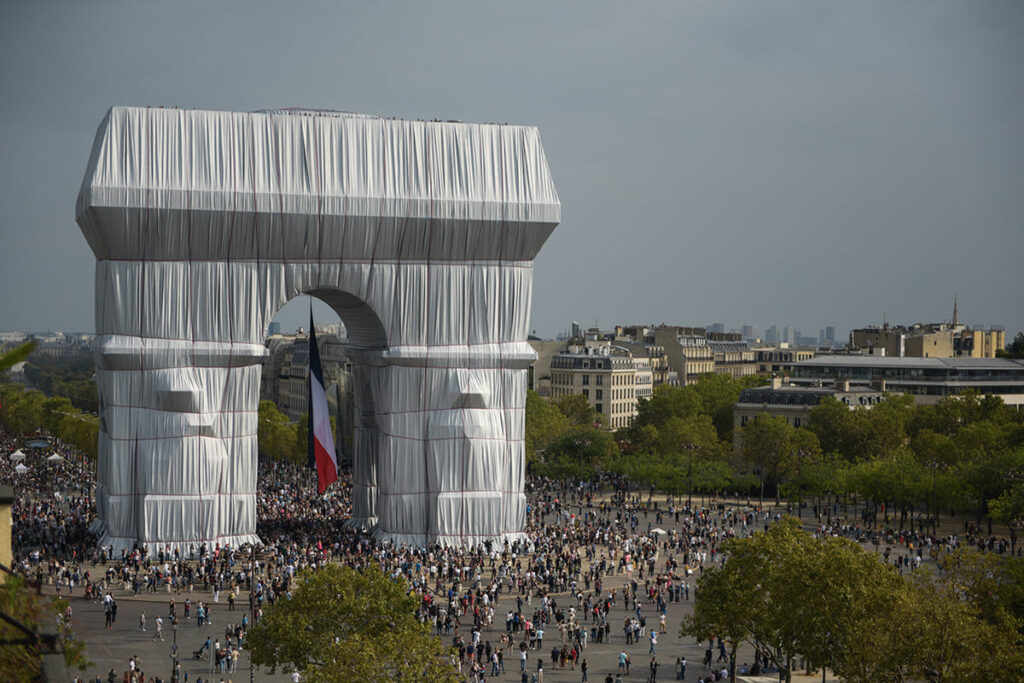Freedom is a creative act involving the ability to listen to multiple and even conflicting points of view with empathy while working together on a joint project. It is public art. View the study sheet here. Watch the recording here.

On September 18, 2021 Paris awoke to see one of its most famous monuments, the Arc de Triomphe, completely wrapped in 270,000 square feet of silver blue polypropylene fabric and 22,965 feet of red rope. Supporting the fabric underneath was a frame consisting of 400 tons of steel. The construction project had taken 3 months. It was the realization of a vision that had begun with a series of drawings in 1962. The entire installation was disassembled after 16 days.
L’Arc de Triomphe, Wrapped was the work of husband and wife artists Christo and Jeanne-Claude, both of whom died before any of the installation work had started. Christo and Jeanne-Claude created monumental environmental works of art. They would temporarily sheathe buildings and natural features with a variety of materials. Their largest piece was Surrounded Islands, made up of 6,490,638 square feet of material set in Miami’s Biscayne Bay.
The physical pieces themselves were only a facet of each art project. For Christo and Jeanne-Claude the bureaucratic wrangling, environmental impact reports, and political arguments were equally important aspects of their art: “For me esthetics is everything involved in the process – the workers, the politics, the negotiations, the construction difficulty, the dealings with hundreds of people. The whole process becomes an esthetic – that’s what I’m interested in, discovering the process. I put myself in dialogue with other people,” Christo said in a 1972 interview.
This esthetics of process which produces beauty subject to ongoing revision is what is at work in Exodus. It is represented by the projects known as the Mishkan and the Priestly Vestments, which represent the redesigning of human internal and external life. In this week’s portion two sculptures are created. Both are smashed as imperfect. A third and more enduring one is crafted. All of this shaping and re-shaping of individual and communal form and substance is public work. It is public art. There is a particular flow to the Israelite esthetics in this week’s Torah portion which reveals an arc of triumph.
Join us here at 7:00 p.m. (PST) Thursday February 17 as we explore the arc of triumph: public art.








